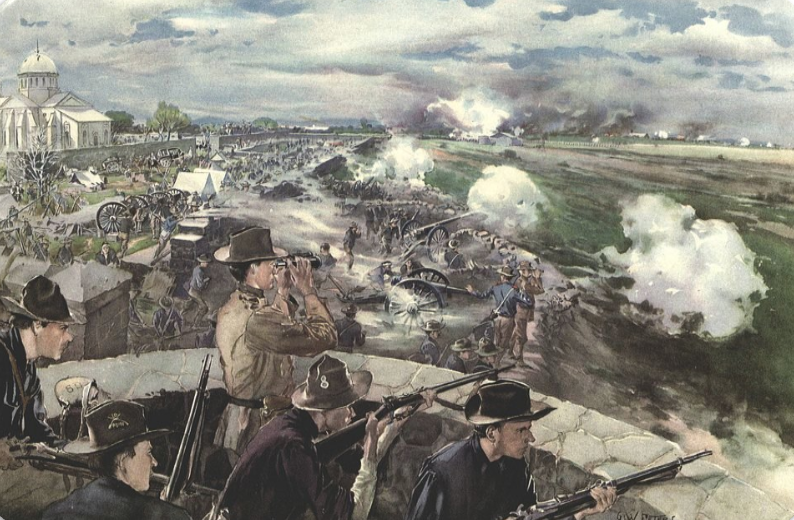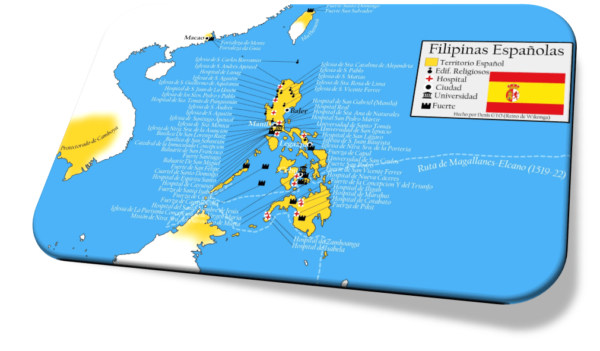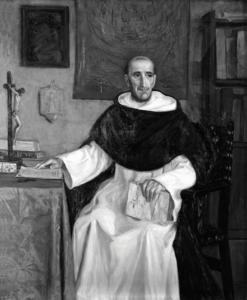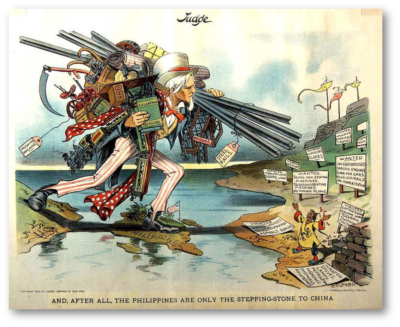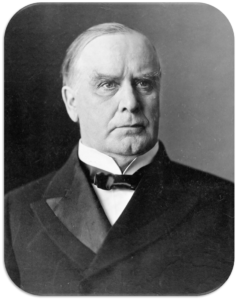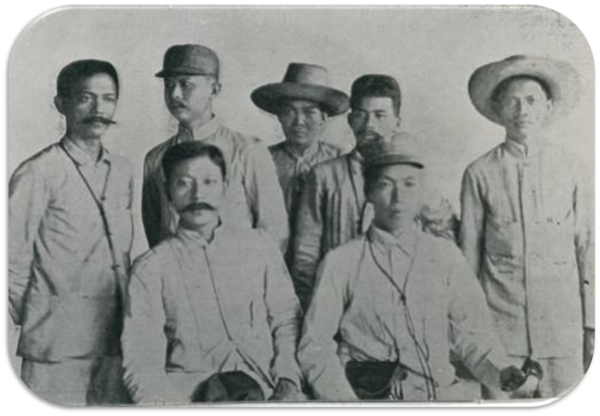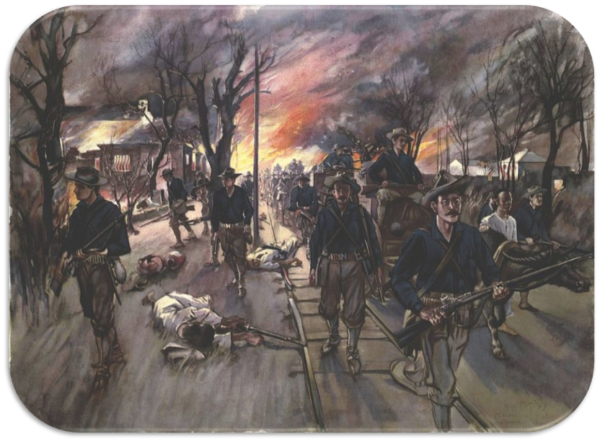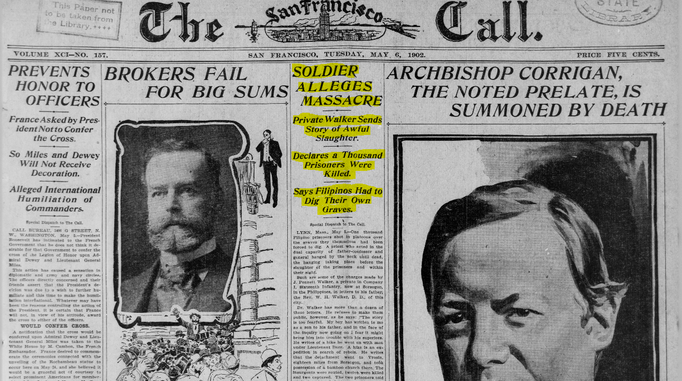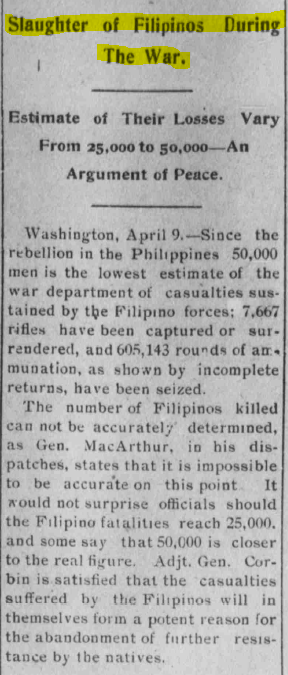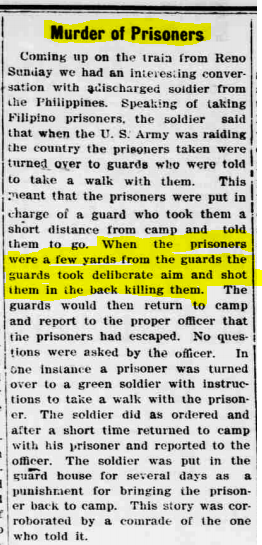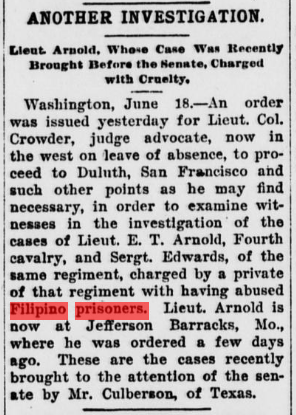Source:Unión Hispano Americana
Today we look back at a dark and forgotten chapter of history: the Philippine-American War and the atrocities perpetrated by the United States in the Philippines.
Spain. Motherland and creator of more than 20 Nations. The Philippines was one of them. It had an unusual and never before glimpsed event in what later became very common among the European colonising powers.
In 1598, a Royal Decree was issued in Manila on 5 August, instructing Francisco de Tello de Guzman, Governor General of the Philippines, to conduct a plebiscite among the indigenous Filipinos. The purpose was to allow the native Filipinos to decide freely whether they wished to belong to and submit to the control of the Spanish Crown, and to recognise the Empire as a legitimate sovereign authority.
The referendum of 1599 was a response to reforms in the New World aimed at eliminating all kinds of abuses of the natives. These reforms were based on the ideas of people like Alonso de Veracruz or the Dominican Francisco de Vitoria, who argued that the natives were sovereigns of their own lands, regardless of their level and cultural development.
From then until 1898, the Philippine islands were part of Spain.
For its part, the United States sought to establish its presence in the Pacific and promoted social conflicts through the nefarious “secret societies” introduced by Americans from Hong Kong, which led to warfare financed by the Yankee power, just as it did in Cuba and Puerto Rico. Despite promising independence, the US maintained control over the Philippines, turning it into a colony until after World War II.
The front page of the New York Journal on 5 May 1902 featured a cartoon depicting the infamous General Jacob H. Smith giving the order to “kill all Filipinos over the age of ten”. This brutal order marked the beginning of a veritable genocide that cost the lives of more than a million Filipinos.
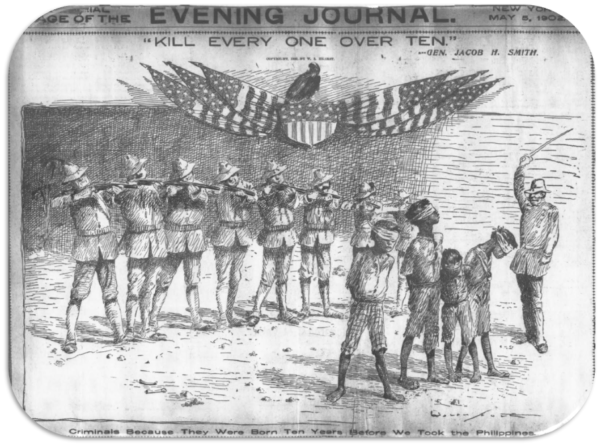
Press image showing the infamous order given by General Smith “kill those over 10 (years old)” New York Journal, 5 May 1902.
Let’s take a closer look at the facts and expand on the information with some hard facts. Let’s get started!
After the cessation of the war against Spain, and despite the fact that on 12 June 1898 Emilio Aguinaldo read the Declaration of Independence in Cavite, it was of no use. They were false liberators. The Philippines remained the spoils of war in the hands of the United States.
In the context of the times, the United States was in a period of expansion and sought to establish its presence in the Pacific. Although the Filipinos were initially promised independence after their victory over Spain, it soon became clear that the US intended to maintain control over the Philippines and turn it into a colony.
This unleashed a cruel war; the absence of the slightest sense of humanity was the norm on the American side, in stark contrast to what had been under Spanish rule for almost 400 years.
The liberation of the Philippines from the supposed Spanish yoke turned into a bloody massacre for what amounted to more than 10% of the Filipino population at the time.
According to President William McKinley, “the Filipinos were incapable of self-government” and there was no choice but to “educate and Christianise them”, an insult to the Spanish, who had established free public education in the country by decree in 1863.
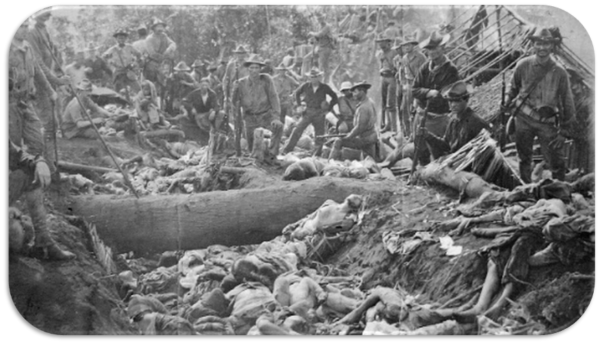
The battles, so defined by the US-Americans, were in reality real butchery carried out by their soldiers against men, women, and children.
During the Philippine-American War, which lasted from 1899 to 1902, countless acts of violence, indiscriminate massacres and atrocities were committed by US forces against the Filipinos.
General Jacob H. Smith’s order was to “kill all Filipinos over the age of ten”, resulting in the immediate deaths of thousands of people, including unarmed civilians.
The unequal war was characterised by Filipinos fighting for independence from their supposed liberators, and resisting US forces attempting to impose their arbitrary control. There were numerous atrocities, including rape, summary executions, indiscriminate crimes and massacres, and the burning of entire villages.
Catholic priest Manuel Arellano Remondo, in his work General Geography of the Philippine Islands, estimated that more than one million Filipinos lost their lives during the war. However, the American journalist James B. Goodno, in his book Philippines: Land of Broken Promises, suggests that the figure could have exceeded one-sixth of the country’s total population, i.e. between 1.2 and 1.5 million people.
During this conflict, there were numerous atrocities and human rights violations by the US military.
The American historian Paul A. Kramer, in an article published in the New Yorker magazine in 2008, explains that the burning of villages, violence and torture by waterboarding, a common atrocity by US troops, provoked the indignation of a large part of American society, which was ashamed of its own actions as a nation.
Filipinos were placed on their backs and held down by several soldiers, with a piece of wood placed in their mouths to keep them open. Once the prisoner was subdued, large quantities of water were poured into their mouths and nostrils until they suffocated.
Allegations of torture appeared in American newspapers, even with the censorship imposed by the authorities. Information from the Philippines was leaked, however. In May 1900, the Omaha World Herald newspaper published a letter from Private A. F. Miller, revealing the widespread use of this torture against prisoners of war and a means of obtaining information from Filipinos in general.
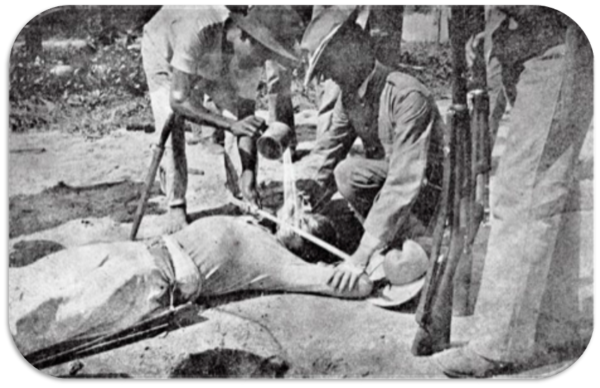
Along with the torture of the population, a period of extermination of all Spanish heritage began. The English language was forcibly imposed on the inhabitants as the only official language.
The consul in Manila, O. F. Williams, in a communication to the Secretary of State, Mr. Day, sentenced: “With the expulsion of the Spaniards, it follows that our language is immediately adopted in courts, public offices, schools and churches again organised and that the natives learn English.”
In 1916, a regime of some autonomy was granted, under the infamous euphemism of the three lies: “Free Associated State”, it was not until 1946 that independence was proclaimed.
It is essential to remember and learn from these historical events based on the geo-strategy of countries that are founded on freedom, democracy, equality or religion.
We must better understand international relations and the dialectical traps used by these countries to avoid the repetition of violent acts in the future.
It is also important to compare these events with those committed by Spain in its history as a conquering nation, in order to get a clear idea of the level of progress and degree of development of the Hispanic world in terms of human rights, as opposed to what is commonly disseminated by its enemies, and in our deficient educational systems in historical matters.
The United States represents a clear example of how “Hispanic humanism” lacked comparison with the forms, customs and habits of other colonial powers such as the United States and other countries of the Anglo-Saxon orbit, in which no sense of humanity was ever applied, except as a false example with which to defame the great work of Hispanism in the world, and thus camouflage their own atrocities, blaming it on the one who should have served as a paradigm for them.
The American case is the opposite of the ideals of heroism and freedom often presented in Hollywood. The American hero is one of its greatest falsehoods, the greater their crimes, the more cowardly they have been.
We must not forget these atrocities and keep the historical memory alive, pointing the finger and denouncing them to the four winds, so that they are not repeated in the future and so that the whole world knows about them.
Alberto Marigil is the owner and manager of the blog Unión Hispano Americana and replies in doantions to continue his research and documentary work. Any financial help to him will be welcome. For any donation, you can do it by Bizum to the phone +34632764765. For any other means contact him directly via WhastApp.
Share this article
On This Day
- 1503 Battle of Cerignola (Italy).
- 1522 Santiago de Cuba is granted the city status by Carlos I.
- 1589 Margarita de Saboya is born.
- 1611 Archbishop Miguel de Benavides founded the University of St Thomas in Manila.
- 1777 José Primo de Rivera, Hero of the Sieges, was born in Algeciras.
History of Spain
26 August 2020
27 January 2021
Communism: Now and Then
23 December 2022
28 July 2021
